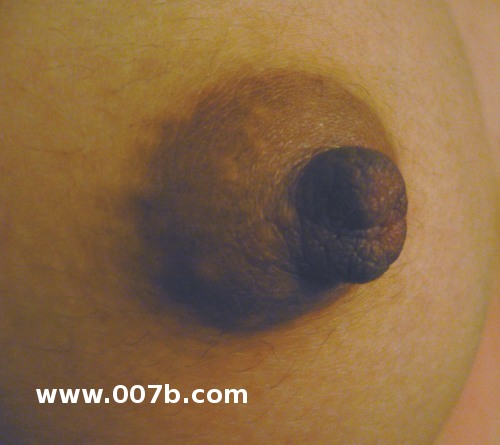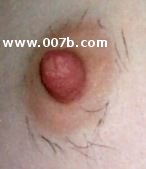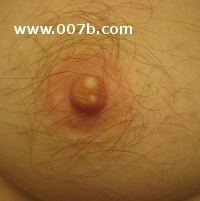Many women are worried or anxious about a few hairs growing around their nipples. In fact, it is one of the common concerns gynecologists get asked about. It is more common than you think, and it occurs more among women with naturally dark hair than others.
The areas around the nipples or the areola have hair follicles just like any other normal skin area. Usually the hairs on women's chests are fine and can hardly be seen, unlike many men, who often have a lot of hair on their chests. This is due to the hormonal differences between the sexes which influence hair distribution. However, sometimes women develop a few long hairs around the nipple, and this is usually associated with hormonal changes related to puberty, menstruation, pregnancy and menopause. During these periods in a woman's life, fluctuations in hormonal levels occur, affecting hair growth. The use of birth control pills can also affect hormonal levels and can cause hair growth around the nipples. These are all normal changes and should not be a cause for worry.
Image: Normal Nipple Hairs from 007b.com
When Nipple Hairs are Abnormal
There are rare instances when hair growing around a woman's nipples may be a sign of an abnormal medical condition. Excessive hair growth in women that is similar to male patterns of hair growth is a symptom called hirsutism. Excess male hormones called androgens cause abnormal hair growth and this may be due to:
Polycystic ovary syndrome - This condition affects one in fifteen women, and it involves an imbalance in sex hormones, causing problems with ovulation and excess hair on the body, including the nipples. When the ovaries produce more androgens (male sex hormones), the ovaries cannot release eggs and also develop many cysts (sacs). Aside from these, symptoms include abnormal menstrual cycles, acne, weight gain, decreased fertility, loss of hair on the scalp and depression. This condition should be treated because it can lead to more serious problems like diabetes and heart disease.
Cushing syndrome - This rare hormonal problem results from exposure to high levels of the cortisol hormone which can cause hirsutism. This may be due to the overuse of corticosteroid medications like prednisone, or due to tumors in the brain or adrenal glands. Symptoms are similar to those of polycystic ovary syndrome, including abnormal hair distribution and nipple hairs.
Image: Abnormal Nipple Hair Growth (Hirsutism) from 007b.com
How to Remove Nipple Hair
Although hairs around the nipples are often normal, many women are embarrassed about them and would rather have them removed. In most cases, pulling them out with tweezers may not help because they grow back thicker and can cause ingrown hairs and infection. It is the easiest way to remove the hairs but it can be painful. Another less painful way to get rid of hair around the nipple is by carefully cutting them with scissors.
- Using chemical depilatories in the form of gels, creams, or lotions.
- Electrolysis is a permanent hair removal method which is done professionally and involves destroying the hair follicles underneath the skin.
- Laser removal involves exposing the hair roots to pulsed light or laser therapy.
- Hormonal treatment or use of oral contraceptives can help treat hormonal imbalances causing excessive hair growth.
Try to avoid shaving the hairs or using wax treatment, as these may have undesirable results. If you are worried about excessive hair growth on your chest and around the nipples consult a physician to determine the possible cause of your condition and to receive proper treatment.


